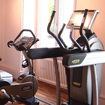teaching practice 1
beginners level
Description
Materials
Main Aims
-
To present and practice the verb to be in the positive and negative form relating to a personal context
Subsidiary Aims
-
Gist listening and specific information. Speaking practice with accuracy
Procedure (43-61 minutes)
Show students the picture from the course book of 2 people on a train to set the context of the listening and elicit what they can see and then write elicited information on the board.
Make students listen to the CD carefully and identify problem. Then peer check their answers in pairs and if needed listen again. Get feedback and write the right answers on the board
Give students the handouts and ask them to read sentences 1-6. Make students listen to the CD and decide whether the sentences are true or false. Then make students listen to the conversation again and peer check amongst them selves and elicit answers on the board.
Get the students to form sentences of the verb 'to be' for example, I'm a teacher, you're students, he's a doctor etc and elicit information from students and write it on the board
Elicit from students the negative verb form to be.
Give students a prompt card each and ask them to make sentences looking at the word on the prompt card both in the negative and positive form in pairs and then elicit answers from the students and write them on the board.
Looking back at the handouts on page 27, activity 2, make the students listen to the CD and fill in the missing gaps, then get feedback and write the feedback on the board. Also make sure the students know how to use the verb in the right context so ask them to make a note.
Split the students into two groups A and B, and give them the prepared handout with six sentences and let them decide if the sentences are true or false

